Industry Projects
The Center for Integrated Electric Energy Systems is engaged in a variety of energy projects with our industrial partners, including Island Pyrochemical Energies Corporation, Unique Technical Services LLC, Energy IT Inc, ChemCubed LLC, ThermoLift Inc, and National Grid.
View our ongoing projects below.
Principal Investigator: Yue Zhang, PhD
Industrial Partner: Sunrise Wind LLC and Orsted Corporation
This project addresses two of the most important challenges in offshore wind (OSW) energy integration into NYISO Zone K and I – onshore transmission upgrade and onshore grid stability – by developing comprehensive energy storage solutions.
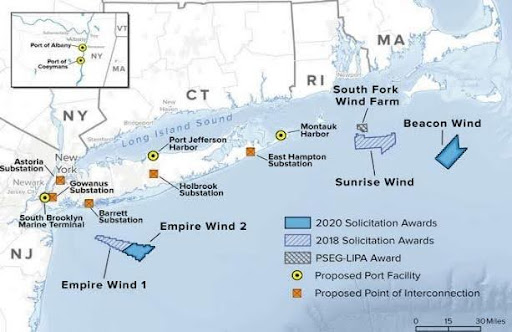
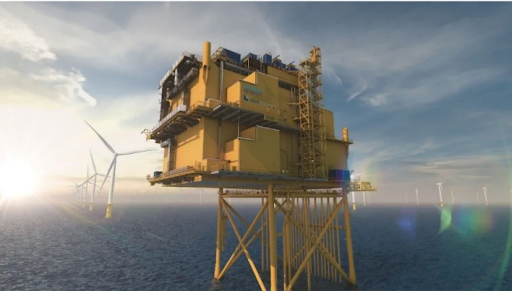
(Left) Wind farm leases off the coast of Long Island. (Right) Rendering of the proposed wind farm off the Long Island coastOnshore grid transmission upgrade has been identified as the most challenging issue in OSW integration, not only for achieving the current OSW integration target but also even more so for the greater OSW goals in the long run. Existing studies on transmission upgrades in the NYISO territory have been simplified as wind energy forecast errors and system contingencies are ignored, whereas real-world power system operations in the presence of forecast errors and contingencies will encounter much more complex scenarios and potentially require a significantly higher need for transmission upgrade. In this project, the flexibility of energy storage will be exploited to absorb the OSW forecast errors and the system shocks due to contingencies and ultimately significantly reduce the need for transmission upgrade and the barrier to massive OSW integration in NYISO Zone K and I. The CIEES team investigates optimal energy storage placement, sizing, and operation strategies under realistic power system operation settings with massive OSW, and evaluates the value of storage in reducing the need for transmission upgrade and OSW curtailment. Another challenging issue with massive OSW is grid stability in the presence of a) rapid fluctuations of wind energy and b) reduced system inertia as fewer conventional synchronous generators are present. The team utilizes the fast control of energy storage, inverters and OSW wind turbines for stabilizing the voltage and frequency of the onshore grid. The deliverable is a hi-fidelity dynamic model and simulator of the Zone K and I with OSW and storage, and comprehensively evaluates the benefit of storage control in improving the onshore grid stability.
Principal Investigator: Benjamin Hsiao, PhD
Industrial Partner: BAH Holdings LLC
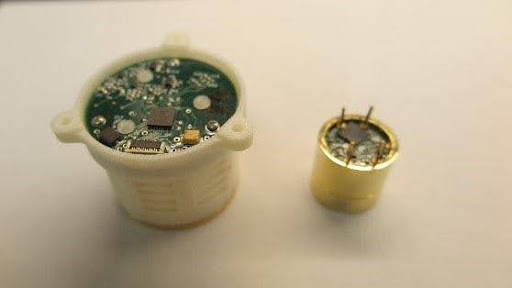 Optical methane sensors developed by BAH Holdings
Optical methane sensors developed by BAH HoldingsBAH Holdings is a startup developing optical sensing solutions for the petrochemical industry. The company is interested in developing a new generation of gas sensors using the mid-IR lasers and LED that are being researched in SBU's Electrical Engineering Department. The company extensively used CIEES facilities for testing the infrared methane sensor. BAH is entering a testing agreement with ConEd for pilot testing of 200 sensors in the New York City service area. CIEES team is assisting BAH with preparing sensor samples for the Gas Technology Institute validation, and in finding vendors for the pilot production of the 200 sensor units for the ConEd Field trials.
Additionally, the company is working with an established international supply of portable natural gas sensors on a joint development agreement that would allow BAH expansion into the portable gas sensing market. CIEES assisted BAH with the design of the optical system and validation of the sensor design.
Principal Investigator: Vyacheslav Solovyov, PhD
Industrial Partner: Bren-Tronics, Inc.
Long Island (LI) is a high-density residential area where a large number of renewable energy generation systems have been installed or are at the planning stage. Several Eastern LI load pockets: South Hampton, East Hampton and Montauk are facing summer power shortages due a high seasonal demand. For example, the average annual demand of the South Hampton load pocket is 55 MW, however the summer months can be as high as 140 MW for 10-20 hrs. Behind-the-meter energy storage, which we believe does not require a lengthy and expensive permitting process, can be rapidly deployed and help alleviate this demand with renewables.
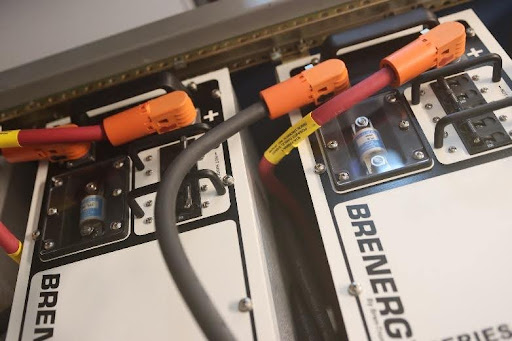 BrenTronics and the CIEES team developed a behind-the-meter energy storage solution
by redesigning an existing 5 kWh, 48 V battery, currently offered by Bren-Tronics
to DoD customers. The unit complies with rigid MIL-Spec safety standards, thus this
solution is a good fit for residential behind-the-meter, on-premises installation
where fire, flood and electrical safety are very important. The flood safety is especially
relevant for neighborhoods in flood-prone coastal areas, such as the South Shore of
LI (as witnessed during SuperStorm Sandy). The market opportunity is estimated at
$20M annually, the main source of revenue being the installation and service of the
battery storage systems.
BrenTronics and the CIEES team developed a behind-the-meter energy storage solution
by redesigning an existing 5 kWh, 48 V battery, currently offered by Bren-Tronics
to DoD customers. The unit complies with rigid MIL-Spec safety standards, thus this
solution is a good fit for residential behind-the-meter, on-premises installation
where fire, flood and electrical safety are very important. The flood safety is especially
relevant for neighborhoods in flood-prone coastal areas, such as the South Shore of
LI (as witnessed during SuperStorm Sandy). The market opportunity is estimated at
$20M annually, the main source of revenue being the installation and service of the
battery storage systems. Principal Investigator: Sergey Suchalkin, PhD
Industrial Partner: BAH Holdings LLC
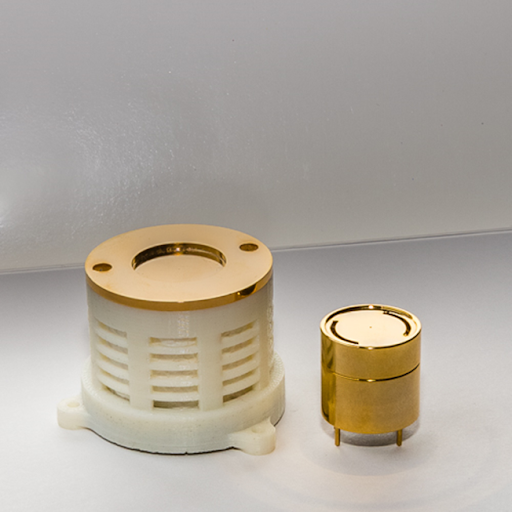 This project focuses on the development of a multi-gas sensor LED with enhanced sensitivity
and selectivity for hydrogen, methane, and propane. With the growing integration of
hydrogen into the natural gas infrastructure, utility companies face an increasing
need for reliable sensors that can detect multiple combustible gases. The proposed
LED technology will enable precise detection and differentiation between these gases,
offering an optimal response to potential leakage alarms in natural gas and hydrogen
networks.
This project focuses on the development of a multi-gas sensor LED with enhanced sensitivity
and selectivity for hydrogen, methane, and propane. With the growing integration of
hydrogen into the natural gas infrastructure, utility companies face an increasing
need for reliable sensors that can detect multiple combustible gases. The proposed
LED technology will enable precise detection and differentiation between these gases,
offering an optimal response to potential leakage alarms in natural gas and hydrogen
networks.The goal is to design and fabricate a mid-infrared LED for selective, non-dispersion optical sensing of methane and propane. By positioning the LED emission wavelength at 3.25 µm, the sensor will be highly sensitive to methane while being unaffected by propane. The tunable nature of the LED, achieved through quantum well structures, will allow for fine control over its wavelength and enhance its selectivity for different gases. Phase I will focus on separating methane and propane signals, while future phases will refine the sensor for other gases like hydrogen.
Economic Impact: The successful development of this LED-based gas sensor will have significant economic implications for the energy sector, particularly in improving safety and operational efficiency for gas utilities. By enhancing the accuracy and reliability of multi-gas detection, this technology can reduce the risk of gas leaks and explosions, leading to lower operational costs and increased confidence in hydrogen and natural gas infrastructure expansion. Additionally, the use of selective sensing technologies will enable more targeted responses to potential hazards, minimizing downtime and service interruptions.
This project aligns with the broader industry push towards integrating hydrogen into the energy system, making it a key component in future-proofing the energy infrastructure.
Principal Investigator: Vyacheslav Solovyov, PhD
Industrial Partner: Bren-Tronics, Inc.
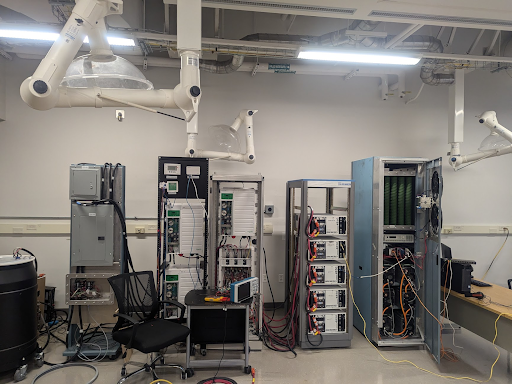 This project aims to enhance the resilience of military microgrids by optimizing the
energy dispatch of Li-ion batteries and supercapacitors. By minimizing recovery time
after disturbances and shedding non-critical loads, the project will develop a rapidly
deployable microgrid solution using Bren-Tronics' Brenergy 480 Li-ion storage and
IOXUS supercapacitive storage. This approach will reduce redundancy and costs while
ensuring faster recovery from disruptions.
This project aims to enhance the resilience of military microgrids by optimizing the
energy dispatch of Li-ion batteries and supercapacitors. By minimizing recovery time
after disturbances and shedding non-critical loads, the project will develop a rapidly
deployable microgrid solution using Bren-Tronics' Brenergy 480 Li-ion storage and
IOXUS supercapacitive storage. This approach will reduce redundancy and costs while
ensuring faster recovery from disruptions.Economic Impact: The project will deliver a cost-effective and resilient energy dispatch solution that minimizes downtime and enhances the reliability of military microgrids. By utilizing commercial off-the-shelf components, the proposed solution offers significant cost savings and operational improvements, positioning New York-based businesses like Bren-Tronics and IOXUS at the forefront of microgrid technology for military applications. Additionally, this work will improve the Mission Dependency Index (MDI) of military bases by ensuring critical infrastructure remains operational during disruptions.
Principal Investigator: Vyacheslav Solovyov, PhD
Industrial Partner: ChemCubed LLC
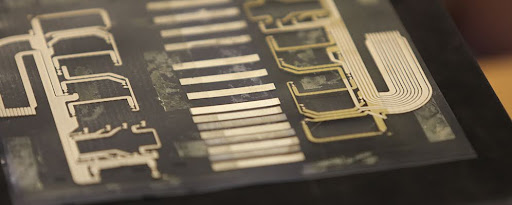 The project focuses on developing a scalable, reel-to-reel manufacturing process for
flexible high-power electronics, catering to grid, storage, and defense applications.
As the flexible electronics market is projected to reach $48.5 billion by 2026, ChemCubed
aims to create an environmentally friendly, low-waste ink-jet photoresist process
for the mass production of flexible electronics. This process will benefit industries
like automotive (GM, Tesla) and power electronics (ABB, GE).
The project focuses on developing a scalable, reel-to-reel manufacturing process for
flexible high-power electronics, catering to grid, storage, and defense applications.
As the flexible electronics market is projected to reach $48.5 billion by 2026, ChemCubed
aims to create an environmentally friendly, low-waste ink-jet photoresist process
for the mass production of flexible electronics. This process will benefit industries
like automotive (GM, Tesla) and power electronics (ABB, GE).Economic Impact:
- Federal Funds Acquired: $1.2M (Phase I Air Force SBIR)
- Non-Government Funds: $300,000 (angel investment, venture capital)
- Increased Revenue: $500,000 (product sales/services)
- Cost Savings: $100,000 (process improvements and equipment access)
- Capital Expenditures: $200,000 (equipment/facilities expansion)
- New Jobs Created in NY: 3
- Jobs Retained in NY: 2
Principal Investigator: Vladimir Samuilov, PhD
Industrial Partner: Agente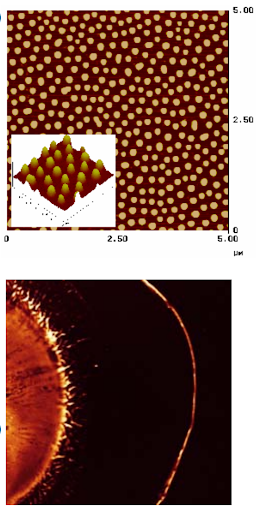 The primary goal is to develop a thin (~10 µm) nanocarbon film-based sensor that detects
ice and moisture by measuring the electric resistance changes. This sensor, potentially
placed as a small patch on wind turbine blades or aircraft propellers, can detect
ice formation and dew point changes in real-time.
The primary goal is to develop a thin (~10 µm) nanocarbon film-based sensor that detects
ice and moisture by measuring the electric resistance changes. This sensor, potentially
placed as a small patch on wind turbine blades or aircraft propellers, can detect
ice formation and dew point changes in real-time.Economic Projections:
- Non-Government Funds: $300,000 from private investment after project completion.
- Increased Revenue: $500,000 expected from new sensor sales.
- Cost Savings: $100,000 from reduced overhead and utilization of CIEES facilities.
- Capital Expenditure: $200,000 allocated for establishing a pilot manufacturing facility.
- New Jobs Created in NY: 2 new jobs projected.
- Jobs Retained in NY: 1 job retained.
This project not only advances sensor technology for wind turbines and aircraft but also generates economic growth and job creation in New York.
Principal Investigator: Vyacheslav Solovyov, PhD
Industrial Partner: Thea Energy
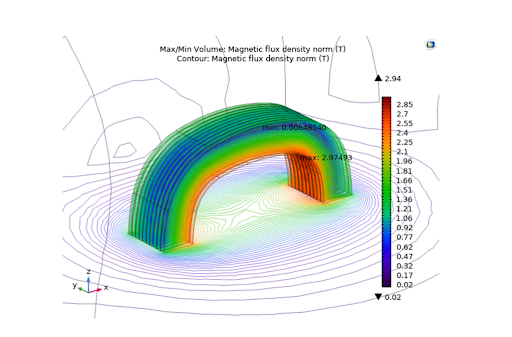 The project focuses on the quench and transient analysis of the Thea Energy Stellarator
using lumped element STEAM-LEDET code, aimed at advancing the development of HTS-based
planar magnets for stellarator applications. Below is an outline of the project objectives,
tasks, milestones, and expected economic impacts.
The project focuses on the quench and transient analysis of the Thea Energy Stellarator
using lumped element STEAM-LEDET code, aimed at advancing the development of HTS-based
planar magnets for stellarator applications. Below is an outline of the project objectives,
tasks, milestones, and expected economic impacts.The main objective is to develop a semi-analytical numerical model to understand the thermal and electrical behavior of 2G-HTS planar magnet geometry during quench events and transient conditions. This will aid in the development of planar coil stellarators, with Thea Energy’s planar magnet consisting of multiple double pancakes of tape-wound HTS and stainless steel metal insulation.
Economic Impacts:
- Federal Funds Acquired: The project is part of the INFUSE project with BNL, valued at $300,000.
- Non-Government Funds: Thea Energy has secured $20 million in Series A funding led by Prelude Ventures, with participation from multiple investors.
- Cost Savings: $100,000 due to cost reduction strategies, including the use of specialized facilities at CIEES.
- Capital Expenditures: $0 (no new equipment purchases planned).
- New Jobs Created in NY: 3 jobs.
- Jobs Retained in NY: 2 jobs retained, which would have been at risk of being cut or moved out of state.
This project aims to deliver advanced modeling and quench protection strategies for planar coil magnets while contributing to job creation and fostering economic growth in the fusion energy sector.
Principal Investigator: Vyacheslav Solovyov, PhD
Industrial Partner: Technic Advanced Technology Division
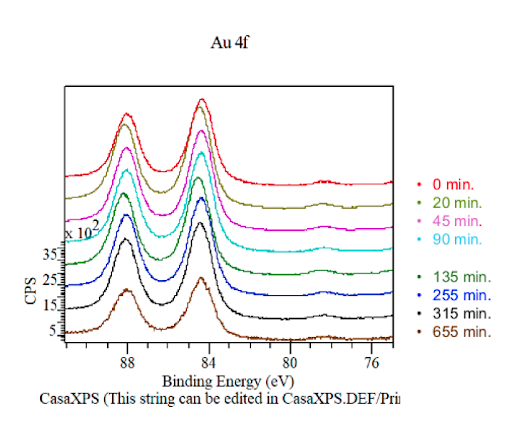 Technic Advanced Technology Division (ATD) is conducting Phase II of a project to
investigate structural defects in high-voltage inverter components using focused-ion
beam (FIB) scanning electron microscopy. The project aims to develop a rapid method
for characterizing highly conductive metalized transitions (vias) and utilizes X-ray
diffraction and composition analysis at Brookhaven National Laboratory (BNL) to explore
these defects. The effort supports 3D integration in power electronics by addressing
performance limitations and enabling the integration of various power device technologies.
The CIEES team will image and analyze Technic’s samples, with ATD seeking a research
intern from CIEES-SBU for support.
Technic Advanced Technology Division (ATD) is conducting Phase II of a project to
investigate structural defects in high-voltage inverter components using focused-ion
beam (FIB) scanning electron microscopy. The project aims to develop a rapid method
for characterizing highly conductive metalized transitions (vias) and utilizes X-ray
diffraction and composition analysis at Brookhaven National Laboratory (BNL) to explore
these defects. The effort supports 3D integration in power electronics by addressing
performance limitations and enabling the integration of various power device technologies.
The CIEES team will image and analyze Technic’s samples, with ATD seeking a research
intern from CIEES-SBU for support.Economic Impacts:
- Non-Government Funds: $200,000 (Technic ATD has secured non-federal monies for this phase).
- Increased Company Revenue: $500,000 (Technic expects increased revenue through products or services developed as a result of the engagement).
- Company Cost Savings: $50,000 (Cost savings attributed to the use of specialized facilities and expertise from CIEES vs. in-house or outsourced options).
- New Jobs Created in NY: 2 jobs created.
- Jobs Retained in NY: 2 jobs retained, which were in danger of being moved or cut.
Principal Investigator: Vyacheslav Solovyov, PhD
Industrial Partner: Senergy Innovations
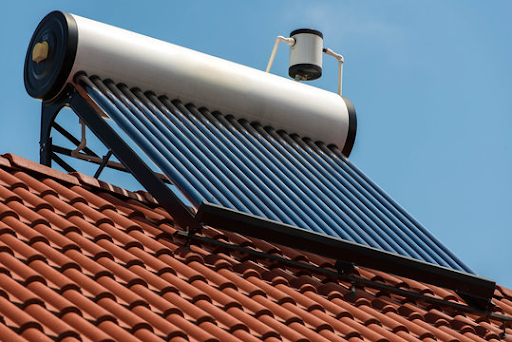 The Senergy Innovations project aims to demonstrate the effectiveness of Senergy’s
advanced solar thermal panels for rooftop water heating. The project will showcase
how these aesthetic and modular panels integrate seamlessly with architectural designs
while providing efficient thermal energy generation. By incorporating a digital platform
into the Energy Management System, the project will highlight reductions in costs,
fossil fuel consumption, and carbon emissions. The goal is to provide compelling data
to accelerate the adoption of Senergy’s technology.
The Senergy Innovations project aims to demonstrate the effectiveness of Senergy’s
advanced solar thermal panels for rooftop water heating. The project will showcase
how these aesthetic and modular panels integrate seamlessly with architectural designs
while providing efficient thermal energy generation. By incorporating a digital platform
into the Energy Management System, the project will highlight reductions in costs,
fossil fuel consumption, and carbon emissions. The goal is to provide compelling data
to accelerate the adoption of Senergy’s technology.Potential Economic Impact:
Cost Reduction: Demonstrates the reduced cost of delivering hot water and heating.
Carbon Footprint: Highlights the reduction in carbon emissions and improved EPC ratings.
Market Adoption: Provides data to accelerate technology uptake and supports the exploration of a Heating as a Service business model.
Additional Benefits: Opportunity for testing innovative financing options through government schemes and low-cost green mortgages.
- Federal grant/contract monies (e.g., NSF, STTR, SBIR, DOD, NIH, DOE) or other government grants awarded as a result of your engagement with CIEES on the project.
- Non-Government Funds: $2,000,000 additional investment.
- Company Cost Savings: $100,000
- New Jobs Created in NY: 3.
- Jobs Retained: 2.
Principal Investigator: David Hwang
Industrial Partner: SuperClean Glass
The Super Clean Glass project aims to scale up the electrostatic cleaning technology for solar panels from a prototype size of 6” by 6” to full commercial panel dimensions of 39” x 78”. The goal is to develop an automated cleaning system that maintains panel cleanliness, thereby optimizing energy output and extending the lifespan of solar panels. Dirt and contaminants on solar panels can significantly reduce efficiency, and this project seeks to address this issue by implementing advanced electrostatic cleaning techniques to ensure peak performance and a shorter payback period for solar investments.

Potential Economic Impact:SCG has secured $1.2 million in federal funds and anticipates an additional $1 million in non-government investment post-2026. Projected to generate over $1 million in revenue from 2026 to 2031, it will also save $100,000 in production costs and incur $30,000 in capital expenditures.
Principal Investigator: Fang Luo
Industrial Partner: GE Aerospace
The "Liability Estimation, Validation, and Modeling Platform for Airborne Grid-tied Bi-directional DC/DC Converter for Grid-Integration" project aims to establish a comprehensive testing platform for analyzing the reliability, aging, and lifetime of bi-directional DC/DC converters used in airborne applications. This project focuses on developing a Wide Bandgap (WBG) based power converter capable of handling 800V to 28V conversions, considering design requirements for high-altitude, uninhabited aircraft environments. Key objectives include modeling electromagnetic interference (EMI) and reflected wave phenomena to ensure the converter's optimal performance and integration into grid systems.
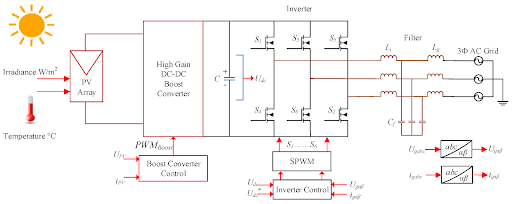
Potential Economic Impact:
The project will enhance the reliability and efficiency of grid-tied bi-directional DC/DC converters in airborne systems, contributing to improved performance and longevity of aerospace power systems. Regular progress reports and annual research findings will be shared with GE Aviation, facilitating ongoing collaboration. The deliverables will include all testing data, models, and joint publications, supporting future advancements in high-altitude DC/DC converter technologies. This initiative not only advances aerospace power electronics but also fosters significant industrial collaboration and innovation.
Principal Investigator: Fang Luo
Industrial Partner: Novele
 The "Demonstration of an Intelligent Energy Storage Network for the Built Environment"
project, a collaboration between CIEES and Novele, Inc., aims to showcase an advanced
energy storage solution at Stony Brook University (SBU). This system comprises 5 Energy
Boards (EBs), a master control box, and a bi-directional inverter, designed to support
urban commercial building electrification. The project seeks to enhance grid resilience,
optimize power consumption through peak shaving, and generate utility bill savings.
CIEES will lead the design and installation of the system in SBU's High Voltage Lab,
followed by functionality and performance evaluations.
The "Demonstration of an Intelligent Energy Storage Network for the Built Environment"
project, a collaboration between CIEES and Novele, Inc., aims to showcase an advanced
energy storage solution at Stony Brook University (SBU). This system comprises 5 Energy
Boards (EBs), a master control box, and a bi-directional inverter, designed to support
urban commercial building electrification. The project seeks to enhance grid resilience,
optimize power consumption through peak shaving, and generate utility bill savings.
CIEES will lead the design and installation of the system in SBU's High Voltage Lab,
followed by functionality and performance evaluations.Projected Economic Impact:
The project will advance urban commercial building electrification by optimizing energy storage systems, leading to improved grid resilience and cost savings through reduced utility bills. It is expected to drive economic growth in NYS by showcasing cutting-edge technology and fostering innovation. The deliverables will include comprehensive test reports and ongoing updates to Novele, supporting future commercial adoption and potential expansion of energy storage solutions.
